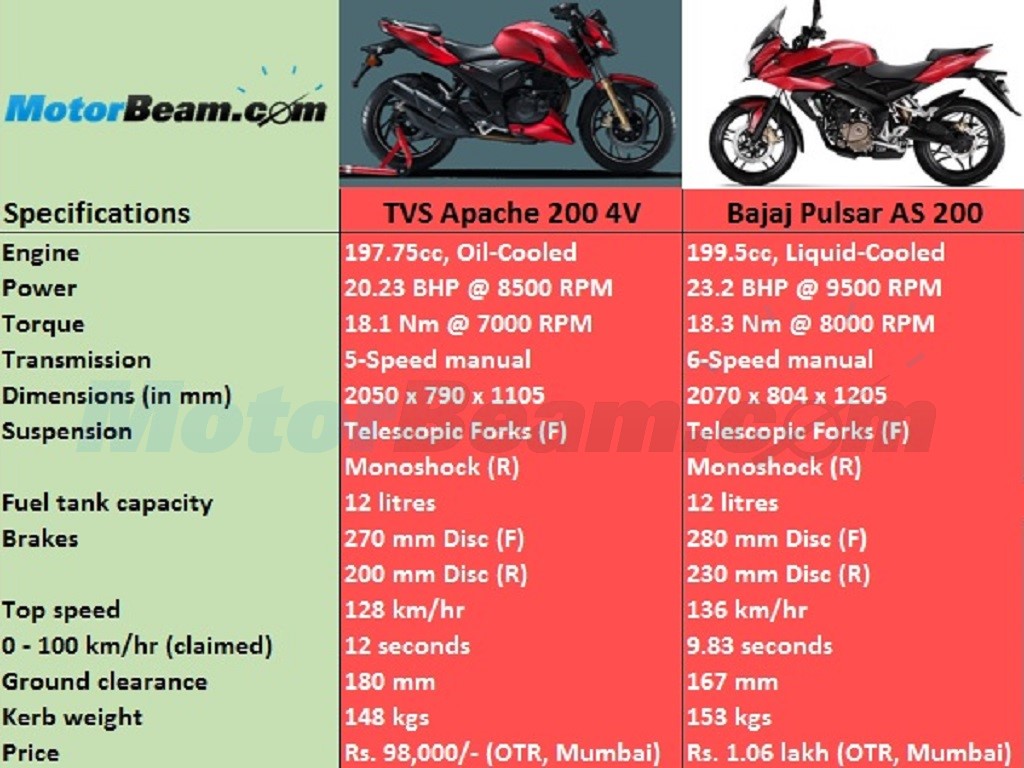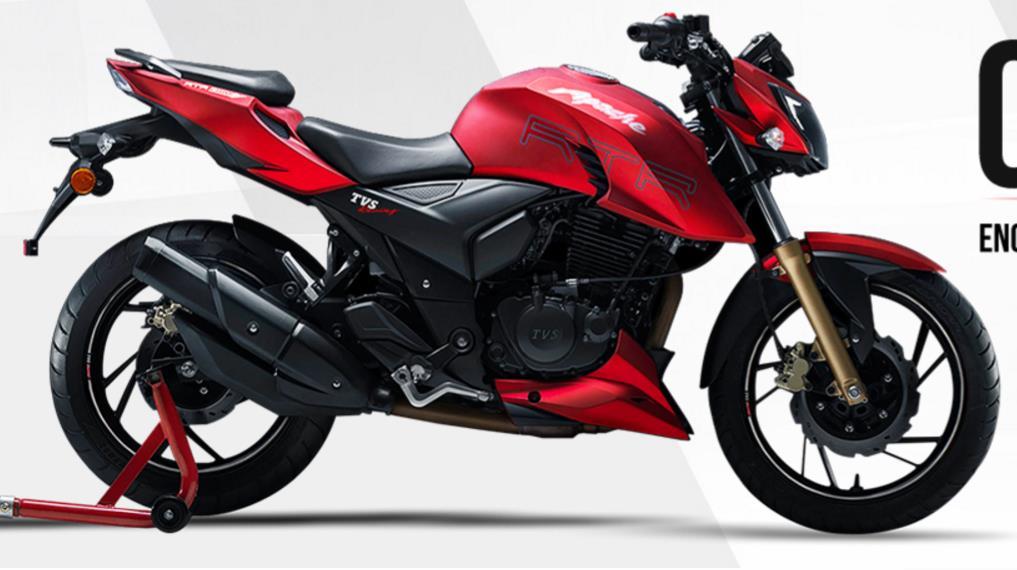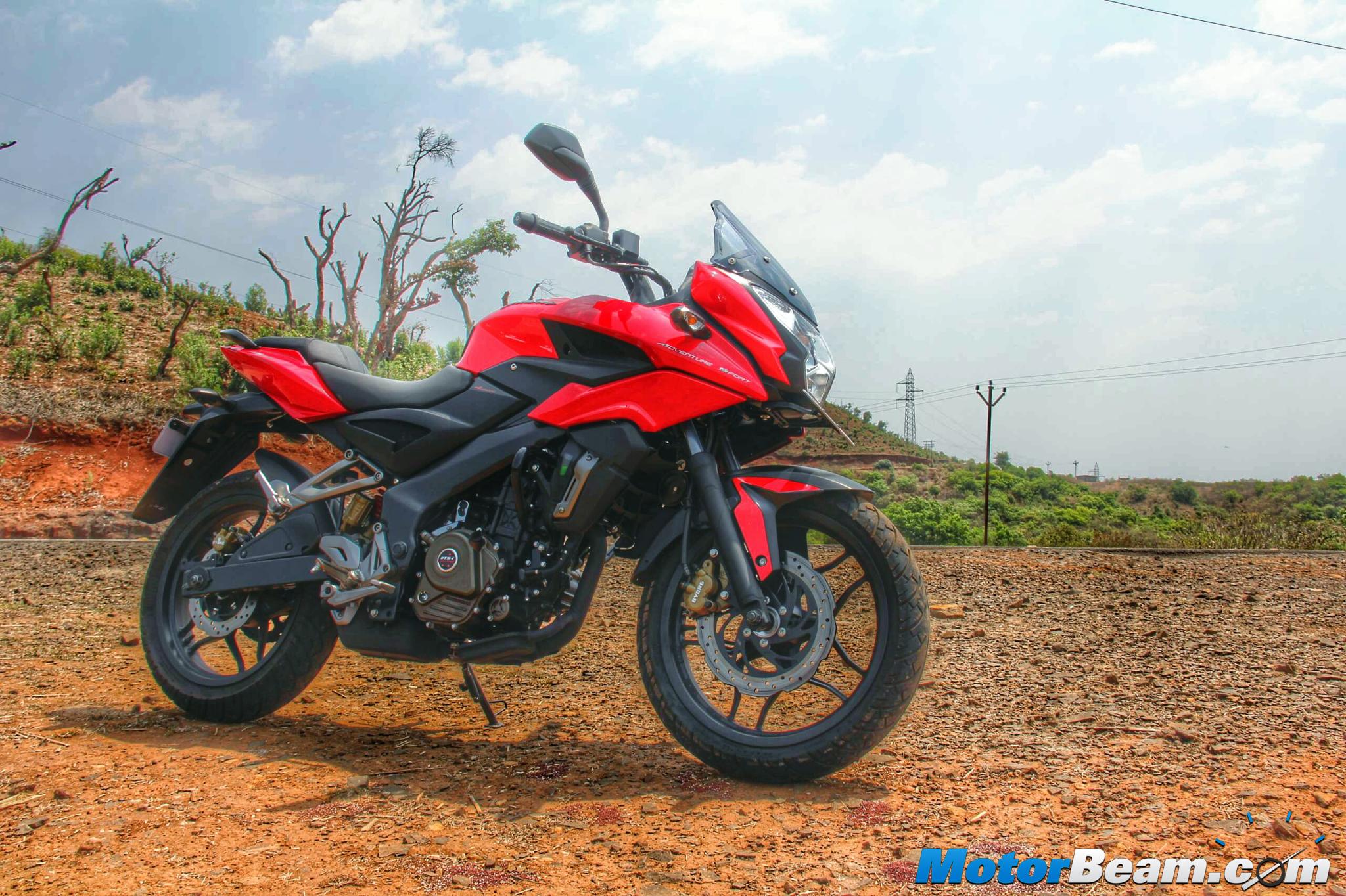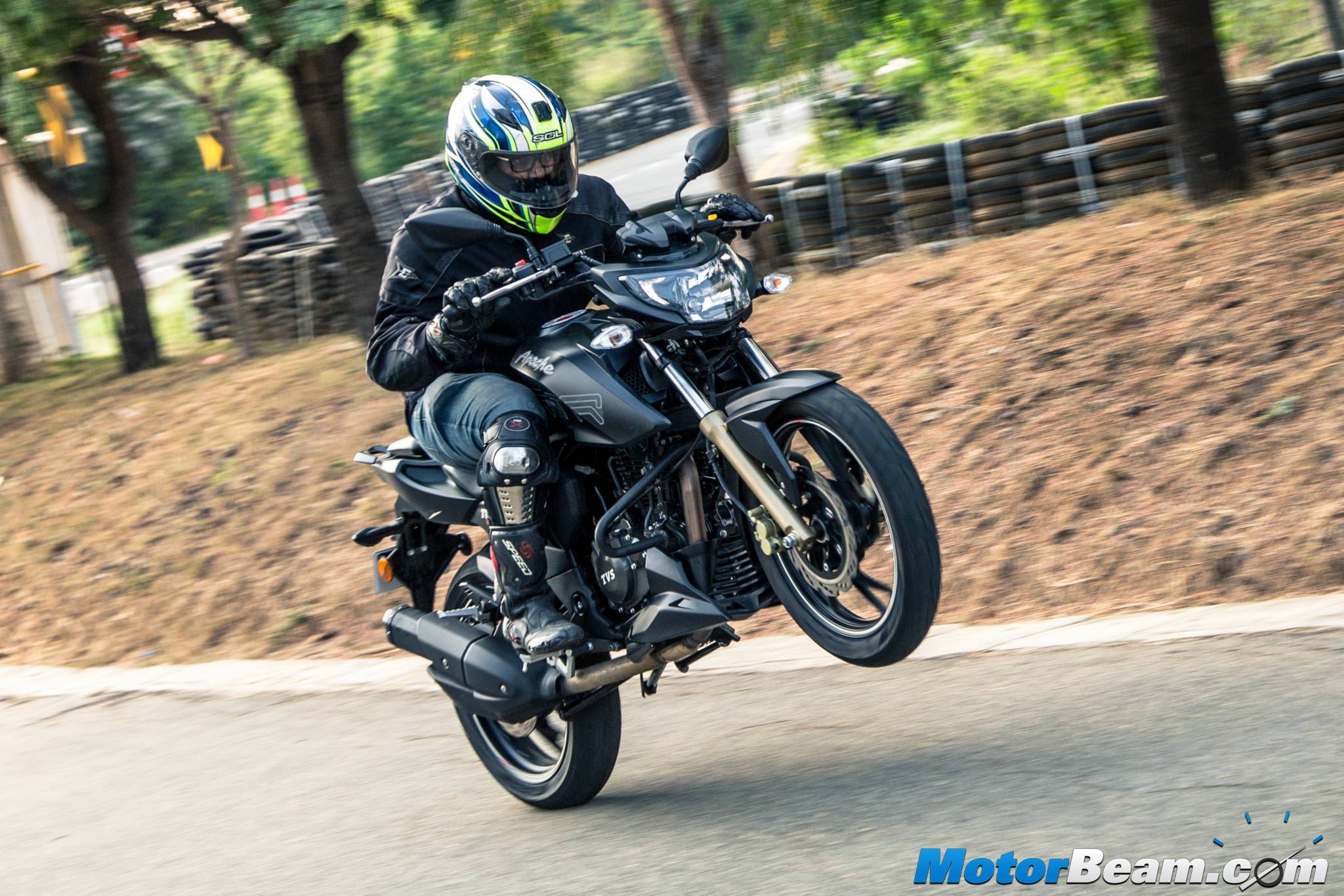TVS has launched the Apache 200 4V amidst much fanfare. It has been loaded with features to annihilate the competition. We do a quick comparison of it with the Bajaj Pulsar AS 200.

The 200cc bike segment hasn’t seen much action since quite some time except the multiple launches in the segment from Bajaj Auto. Hero MotoCorp has been largely away from the segment and their updated Karizma failed to get positive response from customers. Now, TVS has launched a new version of the Apache and it gets a 200cc engine. Obviously, the new kid on the block will have to compete with the already available machines. How does it fare out in comparison to its arch rival, the Bajaj Pulsar AS 200? We find out.
The TVS Apache 200 4V gets a completely reworked design and has little resemblance to the model it replaces. The front-end looks mean due to the presence of DRLs whereas the side profile is accentuated by a belly pan and split seat. On the other hand, the design language of the Pulsar AS 200 is very different and it gets a half fairing at the front, projector headlamp, bigger disc brakes and a windscreen to reduce wind blast. The side profile looks ordinary due to lack of a conventional exhaust but the Pulsar uses a superior perimeter frame while the Apache makes do with a double-cradle frame.
Both the bikes come with clip-on handlebars and get split seats. While the Bajaj gets features like projector headlight, LED indicators and a windscreen, the Apache gets LED DRLs, mobile charging point, acceleration recorder, lap timer, optional dual channel ABS, optional Pirelli tyres and weighs 5 kgs less. The all-digital instrument console of the Apache 200 looks nice and gives out a lot of information. The analogue-digital console of the AS 200 serves its purpose well and is easy to read. While both the bikes use similar capacity engines with 4-valves, there’s a lot of difference between them.
The Pulsar AS 200 uses a 199.5cc 3-spark liquid-cooled engine which produces 23.2 BHP of power and 18.3 Nm of torque. The 197.75cc single-spark oil-cooled engine on the Apache 200 in contrast produces just 20.23 BHP of power and 18.1 Nm of torque. While the Pulsar comes only with a carburettor variant, the Apache comes with fuel injection in the top-end variant. Last but certainly not the least, the Apache 200 is cheaper than the Pulsar AS 200 by around Rs. 8000/-. For the additional price, the Pulsar offers more power (more than 2 seconds faster to the ton), projector headlamps, semi-fairing, liquid-cooling and a 6-speed gearbox. But spend that additional amount on the Apache and you can opt for grippy Pirelli tyres (the Pulsar uses TVS EuroGrip) or ABS, both offered by the company.
TVS has added a ton of features to the Apache 200 which makes it capable of competing with motorcycles from a segment above too. The fuel-injected model indirectly competes with the Pulsar RS 200. In terms of pricing, the fully loaded Apache which comes with ABS and Pirelli tyres undercuts the pricing of the base model of the RS 200 (by Rs. 6000/-) which misses out on ABS and makes do with standard tyres. The additional price you pay gets you better performance, projector headlamps and full fairing but the RS 200 can only be had with a single-channel ABS.





